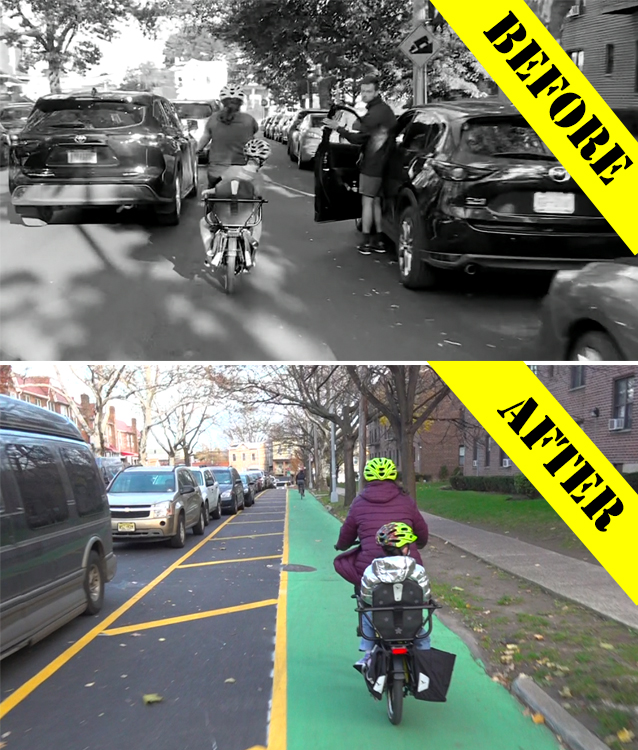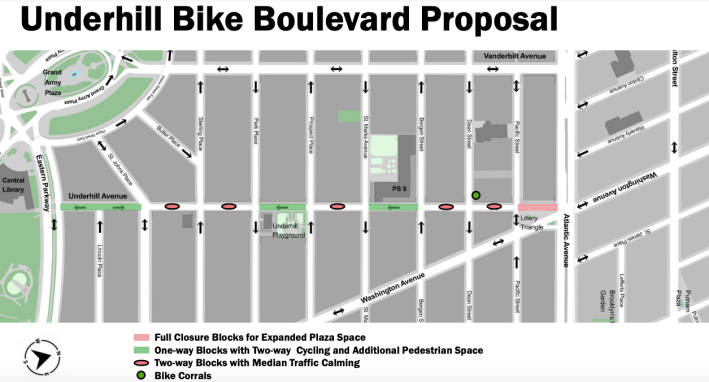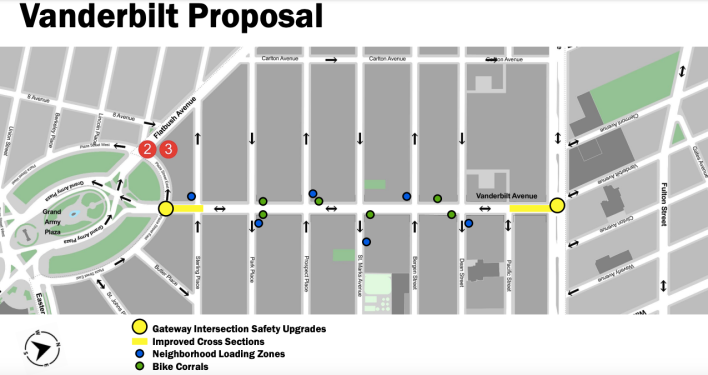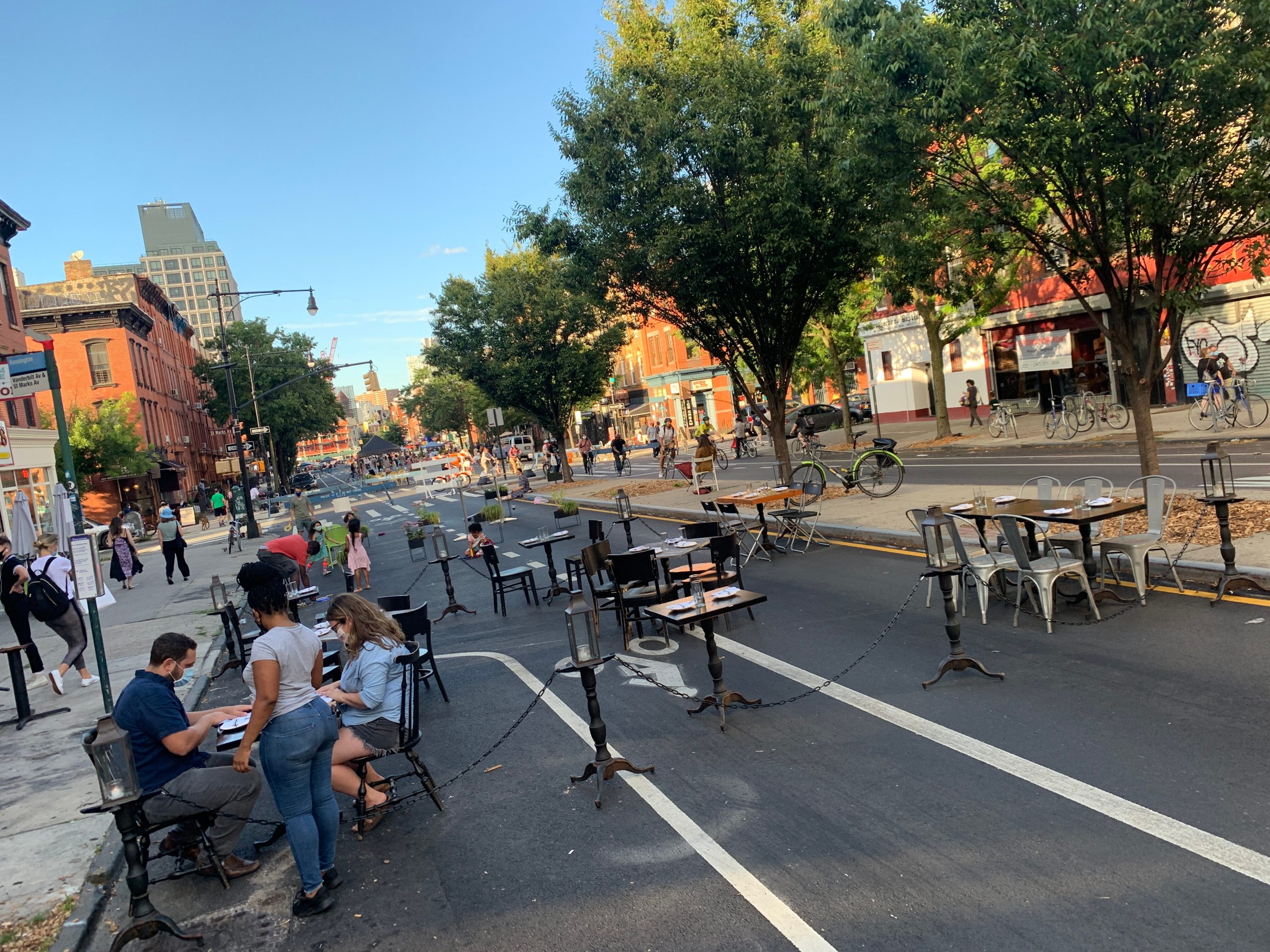The city will transform Underhill Avenue into a bike boulevard and install more traffic-calming measures along the beloved Vanderbilt Avenue open street, officials announced last week — part of a vague "traffic network and public realm plan" for the neighborhood.
Last Tuesday, the Department of Transportation unveiled its plans to convert Underhill Avenue between Atlantic Avenue and Eastern Parkway into a bike boulevard, and implement bike and pedestrian upgrades along Vanderbilt Avenue between Atlantic Avenue and Park Place — a result of workshops from this past spring, during which locals said they want bike- and pedestrian-priority pathways and dedicated loading zones. Vanderbilt Avenue is home to one of the city's most popular open restaurant streets every weekend (see map of the area below).
“It’s a great first step, we’re looking forward to where we can go from here. It’s become a part of weekend life in Prospect Heights,” said Gib Veconi, a member of the civic panel and chair of the Prospect Heights Neighborhood Development Council.
Currently on two-way Underhill Avenue, traffic is restricted to local access Monday through Thursday 8 a.m. to 8 p.m., and on Fridays from 8 a.m. to 4 p.m., though the barriers are frequently ignored by drivers, Streetsblog has reported.
Still, the car-lite hours have led to an overall decline in crashes. Between June 2018 and June 2019 — before the pandemic and before the open street went into effect — there were 30 reported crashes, injuring three cyclists, three pedestrians and three motorists. But between June 2021 and June 2022, when the open street program was in effect, there were only seven crashes during the hours when cars were restricted, injuring just one cyclist and two motorists, according to Crash Mapper.
DOT is now proposing to go a step further and turn the thoroughfare into a bike boulevard — modeled after the one on 39th Avenue in Queens, according to DOT's presentation [PDF]. But the centerpiece of 39th Avenue — a “diverter" to require a right turn off the roadway to prevent thru traffic — is not yet part of the design for Underhill Avenue.

Instead, DOT will fully close the northern-most block, adjacent to Lowry Triangle, to give pedestrians more space. The agency will also prevent thru traffic by turning some two-way blocks into one-way blocks with two-way bike lanes (see map below). And, lastly, the remaining two-way blocks will get a mid-block pinch-point to retard drivers:

And on Vanderbilt Avenue, where the street is closed to cars starting Friday afternoons, and all day Saturday and Sunday from 11 a.m. to 11 p.m., DOT will upgrade the entrance gates to the open street, convert what’s currently just sharrows into a painted — yet unprotected — bike lane between Sterling Place and Plaza Street, and add pedestrian islands and turn lanes for cyclists. DOT will also install loading zones (see map below):

The changes will help force drivers to slow down 24/7, said Veconi.
“The main effect of the changes is to narrow the intersections along the route of the open street and as well to create some additional median space controlling the speed of traffic a bit when not an open street,” he said.
DOT says it hopes to break ground in the fall. The agency declined to elaborate further on the greater "traffic network and public realm plan," except to say it incorporates a "neighborhood-wide review" to explore potential improvements to traffic patters and conditions where to add more pubic space.






